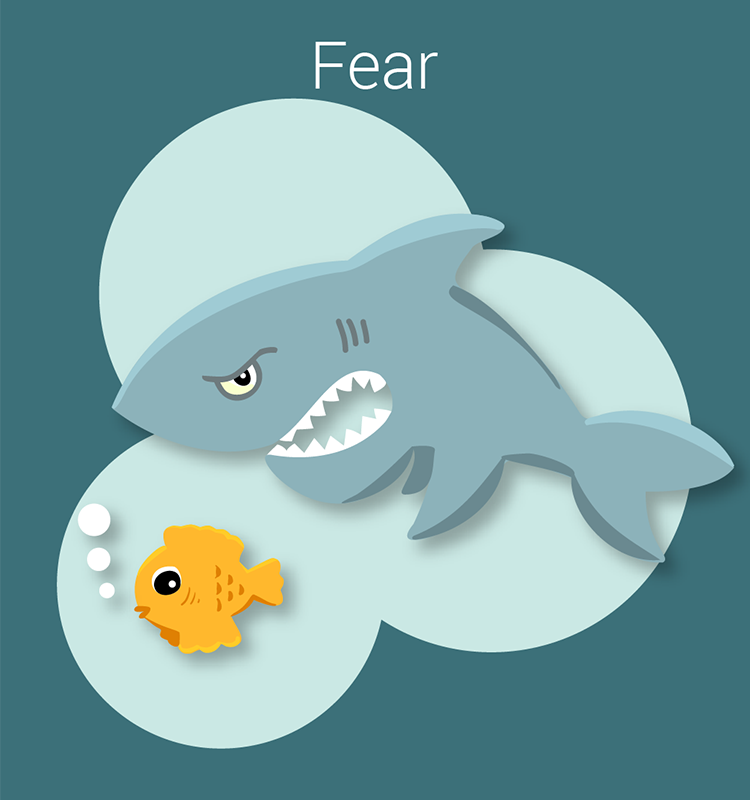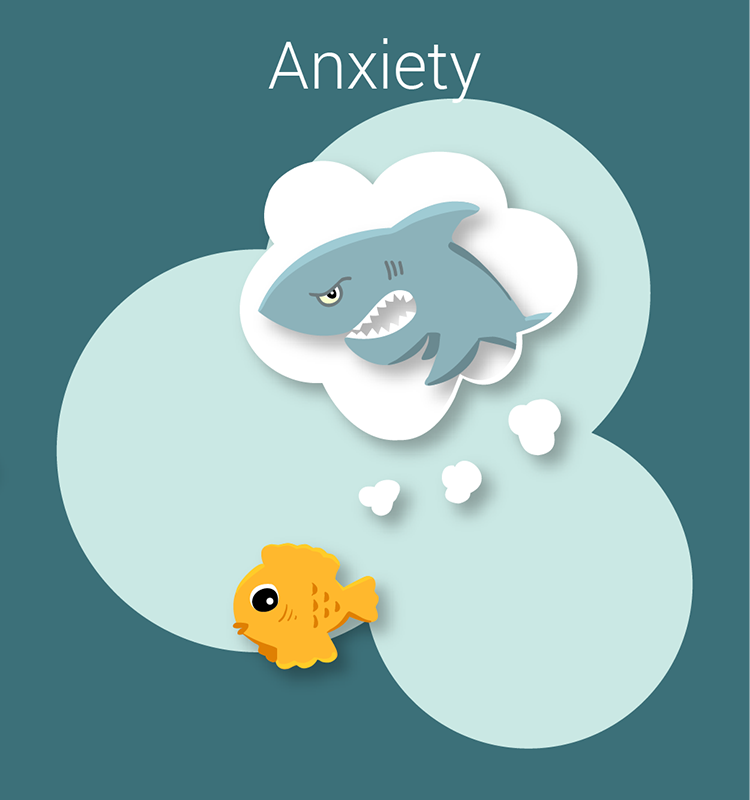hat are you feeling today? Chances are, it is normal. At this very moment, your body is doing what it is designed to do: protect you. Thank you, Body.
Fear: Stress response from immediate danger
Your body responds to immediate danger by experiencing fear. Stressors that come from an external threat, like a dangerous situation, create the emotion of fear. This can be helpful for survival, the typical fight or flight response.

Anxiety: Stress response from your thoughts
Threats can also be internal (e.g. thoughts or memories), vague, or unknown. These types of threats tend to cause anxiety. The body often has a similar physical experience even though the threat is not physically present or visible.

Anxiety and fear both cause very real physical symptoms. Most people can name at least one way their body feels stress, anxiety and fear. For some it is pain, others heart racing; physical sensations can be subtle or profound.
If the threat is managed, the body settles back into its baseline state. If the stressor or anxiety persists, the arousal can continue until the body is overwhelmed. It can become difficult to function with anxiety at a high level. People have trouble being creative, problem solving and attending to details.
Prolonged stress on the body takes a toll. Over a medium amount of time, like a few weeks or months, it can cause symptoms of burnout, depression or anxiety disorder. Longer term, it can have devastating effects on our relationships and our health, contributing to chronic disease.
During times of high stress, we are at risk for being activated more often and for longer. It can be hard to settle down in between. It is during these times that having skills to manage anxiety and fear can be even more useful.
Ways to help your body regulate
1. Acknowledge your body
Ask yourself, right now—Do I feel tension in my body? Where? Do I have any pain?
You might notice fatigue, jitteriness, nausea, headaches, body tension (especially in the chest), etc. All of this can be feedback that your body is dealing with stress or anxiety. The first step to managing stress is to recognize when it is there. Tuning back into the body already helps us begin to address the stress.
2. Unlock the calm within
A calm environment indicates predictability and stability. Even though our world today carries a lot of uncertainty, your body has a system to calm itself within. You can help it along in a variety of ways.
- Take a deep breath. Take another.
- Move your body by walking, dancing, yoga, tai chi, exercising, gardening, etc.
- Drink a glass of cold water, splash cold water on your face, or go outside into the cool air.
- Hum or sing a favorite song.
- Watch a funny video and laugh.
- The foods you eat, physical activity and sleep all contribute to your ability to manage stress.
This article was originally published April 6, 2020. It has been updated to reflect current information.
Megan Jean Whitlock
When life gets busy, it’s easy to forget what keeps us grounded and therefore more satisfied with life. Sydney Ryan reflects on the importance of making time for yourself and prioritizing what is important for you. She explains simple, deliberate actions that have made a difference in her work and her life.
COVID-19 and social unrest have brought about heightened stress and trauma for our health care community. Nurse manager Bernice Tenort provides a simple exercise to help employees and teams pause, think critically, and respond compassionately when stress levels increase.
Family Medicine physician and co-director of the Resiliency Center Amy Locke outlines five ways U of U Health’s strategic commitment to well-being is paying off during COVID-19.
